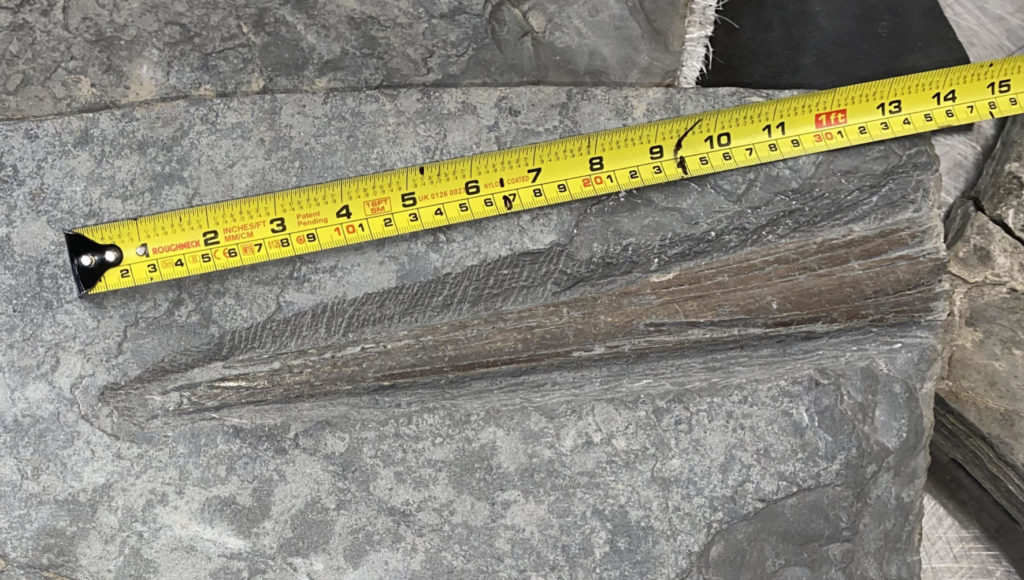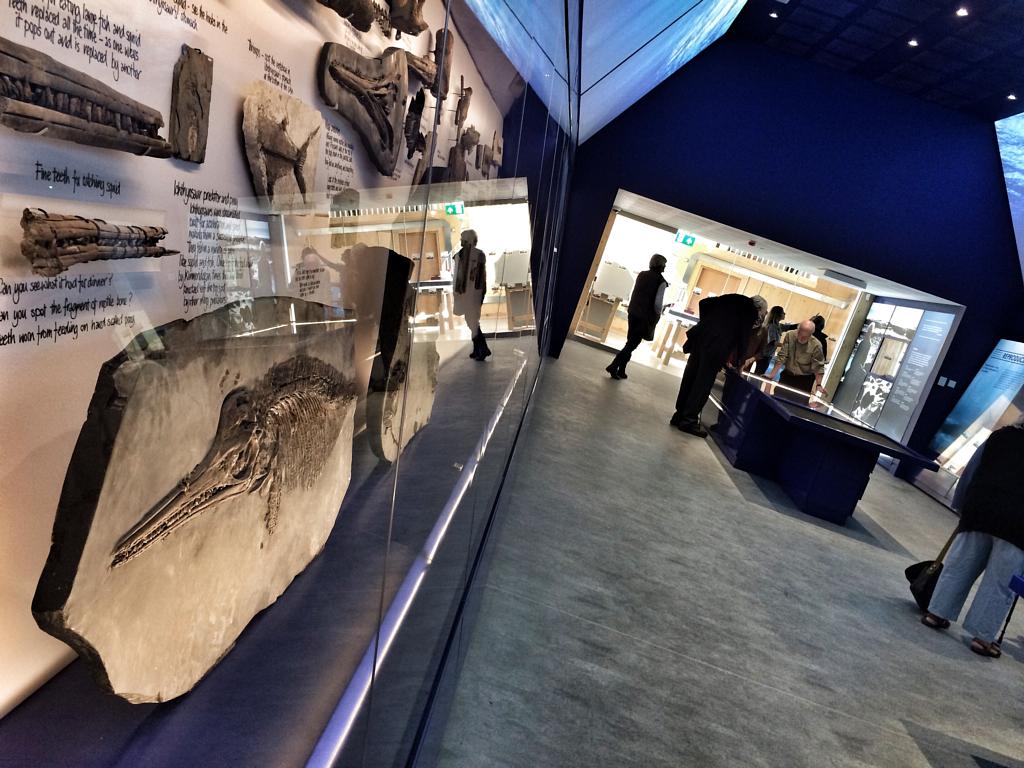A new fossil find is to be unlocked from the rock, live on camera, at The Etches Collection, the museum of Jurassic marine life in Kimmeridge in Dorset.
Paleontologist, Steve Etches will be preparing the rare ichthyosaur fossil in his glass-walled workshop from Monday 28th July 2021, while visitors to the museum will be able to watch a live feed on a large television screen to witness the work in progress.

A close-up of the snout of the creature. The whole thing is about six feet long.
Could be “incredibly important specimen”
Steve Etches, who is world renown for his work said:
“We think this may be an ancestor to an ichthyosaur called Eurhinosaurus but we don’t know. This could turn out to be an incredibly important specimen.”
In appearance, the ichthyosaur is like the modern-day dolphin, except that it was a reptile rather than a mammal.
The prehistoric specimen was discovered on the Dorset coast by a friend of Steve’s a month ago. Usually, he works exclusively on Kimmeridge clay finds, so this is a bit of a departure for him as it comes from the older Lias rock which dates back a further 33 million years to 190 million years ago.

The painstaking process of preparing a fossil can take weeks or months
“No idea as to just how special it could be”
Steve said it was an opportunity he just couldn’t turn down:
“This is something much older than normal and something I don’t usually get my hands on.
“My interest really lies in what it will reveal. We know it’s an ichthyosaur, but the excitement comes from having no idea as to just how special it could be.

A White Stone Band ichthyosaur – one of the highlights of the collection
“Enthusiasm has never diminished”
Steve has been finding and preparing prehistoric specimens for forty years but still gets a thrill out of it. He said:
“My enthusiasm has never diminished. I love it. I’m looking forward to opening it up and seeing exactly what we find.”
It’s a painstaking process which requires great skill to ensure that the fossil is not damaged in the process.
Steve said:
“It was discovered by a close friend of mine and I’m sure he trusts me!”

Exhibition inside the Etches Collection Museum of Jurassic Marine Life
Carefully revealing the fossil
The whole task could take between two weeks and a month or more.
Preparation of fossil specimens is a necessary process to expose them from the encasing rock. A variety of techniques, such as air penning and air abrasion are used.
Air penning will be used initially to remove the surface of the rock before air abrasion is used to reveal the finer details.

The museum opened four years ago and cost £5.4 million
Real time experience
Visitors will be able to witness in real time the slow reveal of a prehistoric Jurassic marine reptile using the latest preparation techniques. Later the images will be edited to produce a speeded up documentary.
The Etches Collection Museum of Jurassic Marine Life is the best single collection of Late Jurassic age fossils in Britain. It opened four years ago at a cost of £5.4 million. Many of the species in the collection are of great palaeontological importance.
All of them were discovered in the Kimmeridge Clay and mostly within a three-mile distance of the museum in Kimmeridge.
Further information
More about visiting the fossil museum in Kimmeridge and viewing The Etches Collection can be found on its website





